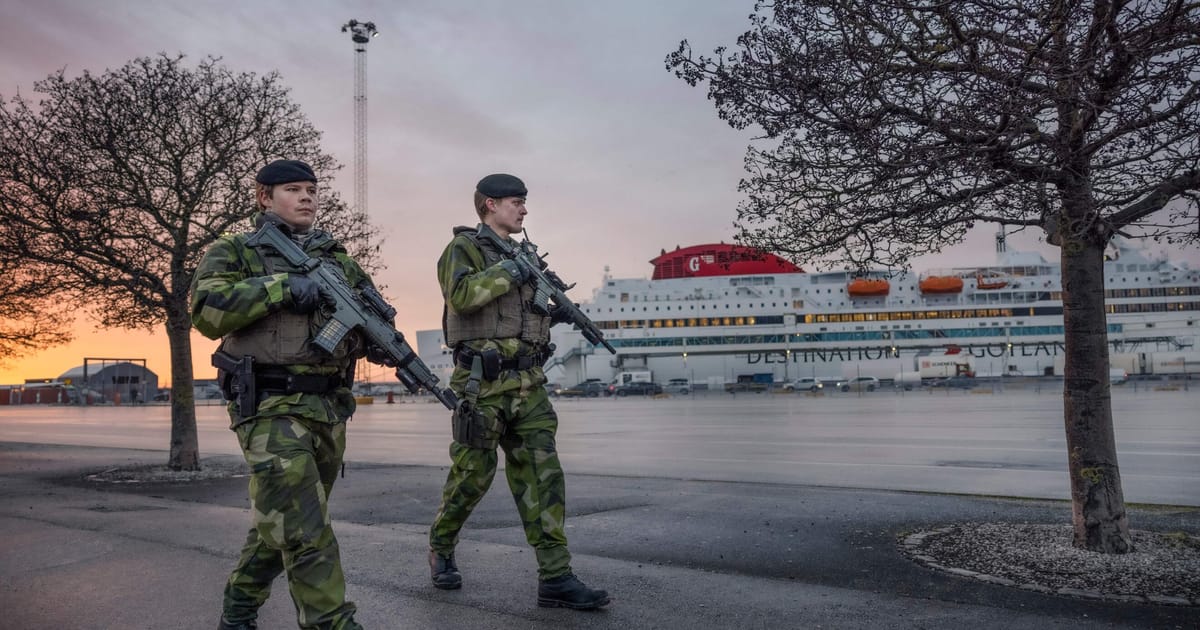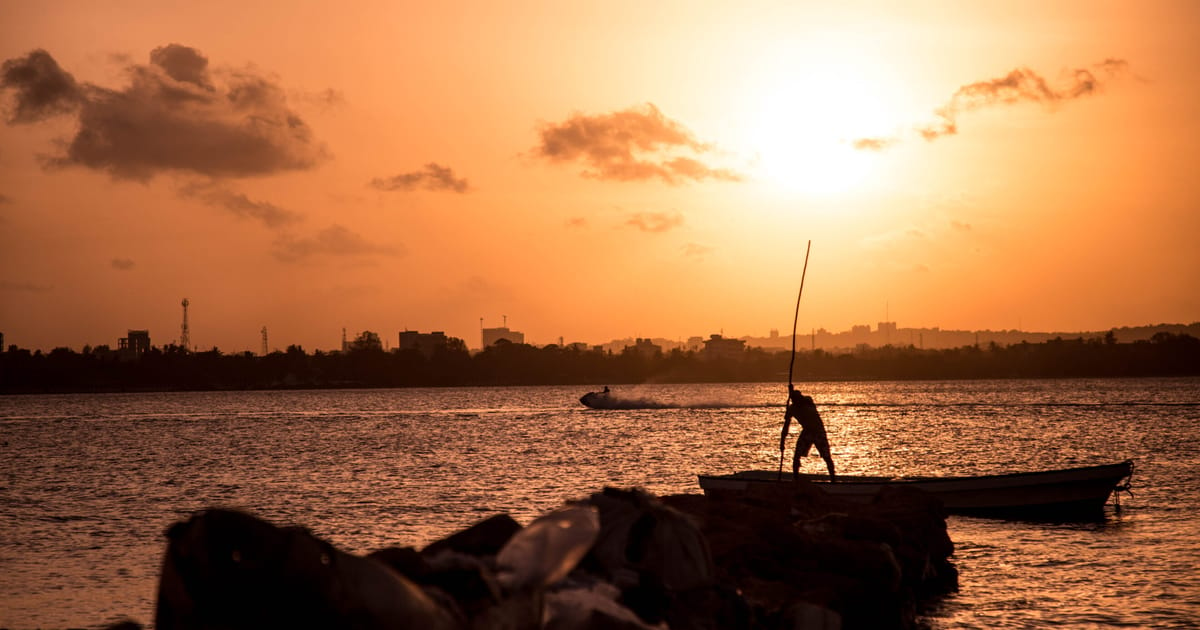Elisabeth Braw is a senior fellow at the Atlantic Council, the author of the award-winning “Goodbye Globalization” and a regular columnist for POLITICO.
An ever-growing headache, Russia’s shadow fleet, which operates outside the official maritime sector and features obscure ownership as well as virtually non-existent insurance, is now menacing Gotland — and thus Sweden.
Because these vessels aren’t part of any armed forces, there’s little that NATO can do about them. And while Sweden now hopes that EU sanctions might do the trick, this solution will be slow going. So, what to do in the meantime?
In order to get to their destinations, which are often Indian and Chinese ports, Russia’s shadow vessels have to travel through the waters of some NATO countries, as a large share of Russia’s oil leaves via its Baltic Sea ports. But the journey of these rickety, de facto uninsured tankers through the Baltic Sea poses an environmental risk to NATO’s members there — and this is exacerbated by the fact that the shadow vessels are in poor repair. Making matters worse, many of them refuse pilotage while navigating Denmark’s tricky and narrow Great Belt.
Adding to this environmental threat, these shadow tankers have also recently taken to loitering outside Gotland’s eastern coast, where they’ve been engaging in risky ship-to-ship transfers of oil. They’re doing so just outside the 12-nautical mile limit which denotes a country’s territorial waters — meaning that even though the shadow vessels are in Sweden’s exclusive economic zone, the country can do almost nothing to keep them out.
This matters not just because their presence is provocative and could cause massive environmental damage, but— as the Swedish Navy reported in late April — these tankers also carry communications equipment that isn’t required on any merchant vessel. They appear to be doubling as listening stations.
None of this surprises Solveig Artsman, a lifelong resident of Gotland. In fact, quite the opposite. Artsman recalls that in 2016, a car carrier traveling from St. Petersburg began to regularly turn up off the Port of Visby and simply loiter there — even though its cars weren’t bound for Visby. “It came extremely regularly and always stayed for a long time,” she told me. “And it always went back and forth to St. Petersburg . . . I was reminded of this car carrier when the shadow vessels started turning up here. If you live on Gotland, you get used to strange things.”
Later, I looked up the car carrier Artsman mentioned: It’s still operating. Its presence off the Port of Visby may have had a logical explanation, of course, but on Gotland one never knows. It is, after all, the Baltic Sea’s — and now NATO’s — most strategic island.
And exceptional things have been happening on Gotland long before this current standoff with Russia.
One day in April 1961, the lighthouse keeper in När, on the island’s southeastern coast, noticed an emergency SOS from a nearby vessel. He immediately called the coast guard, while a visiting lighthouse keeper answered the SOS signal. The two men noticed, though, that the vessel seemed to have anchored and wasn’t in peril.
Some 30 minutes later, two Soviet naval officers — the vessel’s captain and a subordinate — walked up to the lighthouse, having reached the shore by lifeboat. The junior sailor quickly changed his mind and returned to the vessel, but the captain stayed, and it appeared he had something to communicate. Later, as the coast guard arrived and called the police, the mysterious captain turned out to be a Lithuanian-Soviet citizen named Jonas Pleskys, who wanted to defect to the West. Yes, that’s the very Jonas Pleskys subsequently immortalized in the film “The Hunt for Red October.”
And in 2007, a company majority-owned in Russia turned up in Gotland, asking permission to exclusively rent the eastern harbor of Slite for several months. Artsman, at the time a member of the island’s council, opposed letting the company have it, but she lost and was denounced as a Russophobe. Today, however, it’s clear that hosting that business may not have been the best idea: The company was Nord Stream.
As Artsman said, unusual things really do happen in Gotland. And espionage on the island matters even more now that Gotland is part of NATO. “The other day, two busloads of NATO officials were in Slite and took pictures of themselves before leaving,” Artsman told me. And of course, Russia wants to know what Sweden and NATO are up to on the Baltic Sea’s largest island.

So, what to do about today’s shadow fleet and its twin threats of environmental disaster and constant spying?
According to Sweden’s Foreign Minister Tobias Billström, the European Commission has agreed to tackle the shadow fleet in the EU’s next round of sanctions. But while sanctions against this dangerous fleet are indisputably better than no sanctions, this process will take a long time: The fleet is thought to consist of more than 1,400 vessels that need to be identified and investigated, and their owners would need to be found. Furthermore, for every sanctioned ship, at least another one is likely to join the fleet. The United States’ Office of Foreign Assets Control is already imposing such sanctions, and it’s painstaking, cumbersome work.
In the meantime, however, there are two steps EU countries could take that would have a rapid effect on the dark fleet: First, through the European Defence Agency’s Maritime Surveillance project (MARSUR), the EU could identify and investigate all suspected shadow vessels sailing in the waters of its member countries.
Then, the EU could also make use of the Baltic Sea Action Plan. This intergovernmental agreement, which Russia has also signed (as has the EU), is a “strategic programme of measures and actions for achieving good environmental status of the sea, ultimately leading to a Baltic Sea in a healthy state.” Since ship-to-ship-transfers of oil certainly don’t comply with the agreement, its other signatories would be within their rights to try and intervene when such transfers occur.
These two measures wouldn’t block the shadow fleet — indeed, it’s not possible to block this subversive armada. They would, however, make the fleet a bit less dangerous for Gotland, even as mysterious events continue to occur on, and around, the island. That’s just the nature of being located right between the West and Russia.




